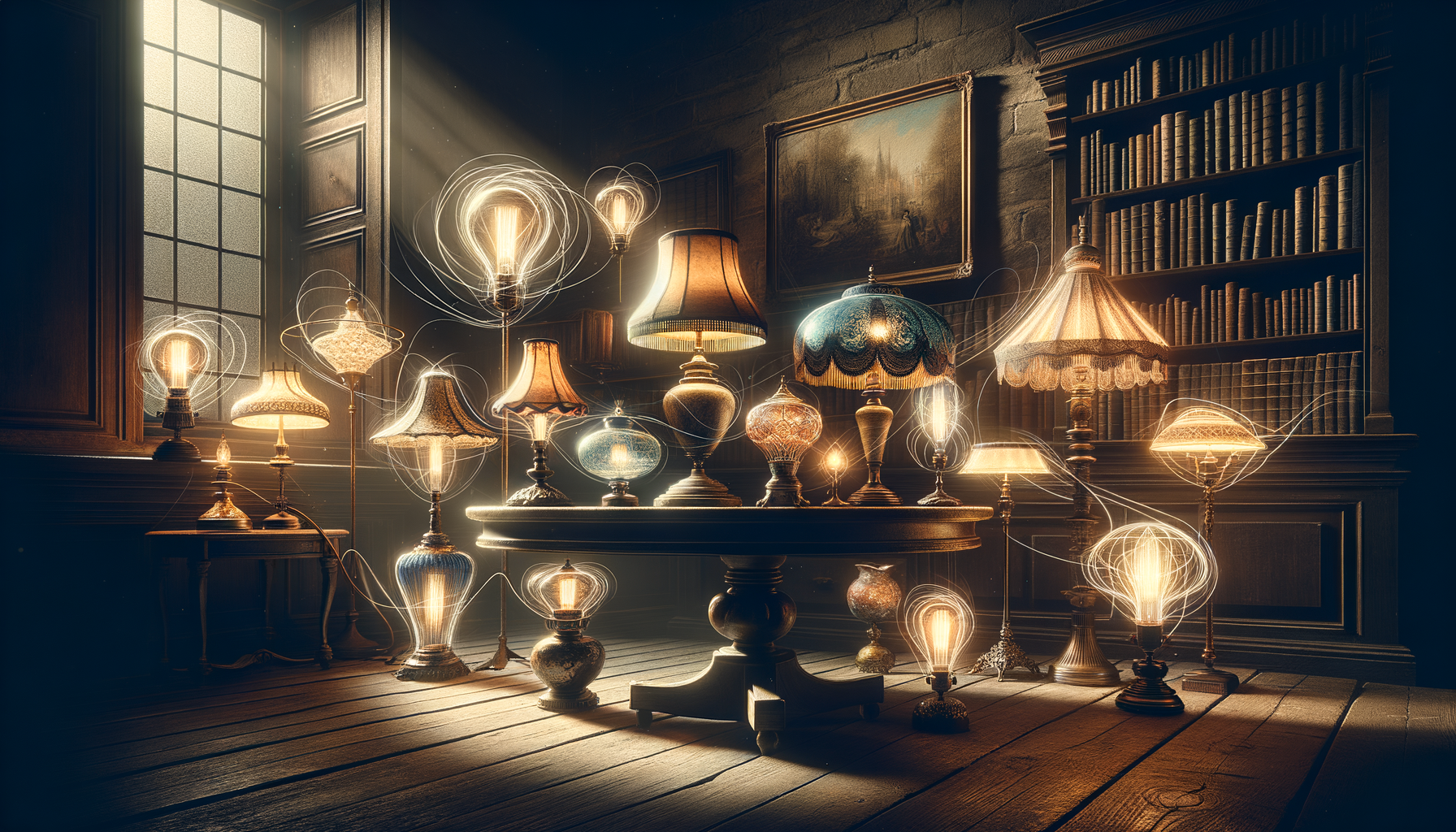The Allure of Antique Lamps
Antique lamps captivate enthusiasts and collectors with their timeless charm and historical significance. These lamps, often crafted between the late 19th and early 20th centuries, serve as functional art pieces that tell a story of a bygone era. The allure of antique lamps lies in their intricate designs and the craftsmanship that is rarely seen in modern lighting solutions. Each lamp is a testament to the artistic and technological advancements of its time, making them not just lighting fixtures but also conversation starters.
One of the key attractions of antique lamps is their ability to fit seamlessly into various interior styles. Whether your home is decorated in a rustic, vintage, or even a modern aesthetic, an antique lamp can add a touch of elegance and history. The materials used in these lamps, such as brass, bronze, and stained glass, contribute to their unique appearance and durability. Collectors often seek out specific styles, such as Art Nouveau or Tiffany lamps, which are renowned for their exquisite designs and vibrant colors.
Moreover, antique lamps often come with stories of their own. They may have been part of a grand estate or a humble cottage, each carrying its own history. This narrative aspect adds depth to their appeal, making them more than just decorative items. For those who appreciate the beauty of the past, antique lamps provide a tangible connection to history, illuminating not just spaces but also the imagination.
Identifying Authentic Antique Lamps
For collectors and enthusiasts, identifying authentic antique lamps is both an art and a science. With the rise of reproductions, it’s essential to recognize the characteristics that define genuine antique pieces. Authenticity can often be determined by examining the materials, construction techniques, and design elements used in the lamp.
One of the first steps in identifying an antique lamp is to look for maker’s marks or signatures. Renowned lamp manufacturers often left their mark on their creations, which can be a valuable clue in determining the lamp’s origin and authenticity. Additionally, the materials used can provide insights into the lamp’s age. For instance, genuine Tiffany lamps are known for their use of high-quality stained glass and intricate lead work.
Another aspect to consider is the lamp’s construction. Antique lamps were typically handcrafted, and signs of handwork, such as irregularities in the glass or metal, can indicate authenticity. It’s also important to examine the lamp’s wiring and electrical components. Older lamps may have cloth-covered wires or other outdated electrical features, which can be a sign of their age.
Finally, consulting with experts or appraisers can provide valuable insights into the authenticity and value of an antique lamp. These professionals can offer detailed evaluations and help distinguish between genuine antiques and reproductions, ensuring that collectors make informed decisions.
Caring for Your Antique Lamps
Owning an antique lamp comes with the responsibility of proper care and maintenance to preserve its beauty and functionality. Given their age and delicate materials, antique lamps require special attention to ensure they remain in good condition for years to come.
Regular cleaning is essential to maintain the lamp’s appearance. Dust and dirt can accumulate on the surface, dulling the lamp’s finish and obscuring its intricate details. Use a soft, lint-free cloth to gently wipe down the lamp, avoiding harsh chemicals that could damage the finish. For lamps with stained glass, a mild glass cleaner can be used to remove smudges and fingerprints.
It’s also important to inspect the lamp’s electrical components regularly. Antique lamps may have outdated wiring that poses a safety hazard. Consulting with a professional electrician to update the wiring can ensure the lamp is safe to use while preserving its historical integrity. Additionally, replacing old bulbs with energy-efficient LED bulbs can reduce heat output and prolong the life of the lamp.
For lamps with metal components, such as brass or bronze, regular polishing can help maintain their luster. Use a metal polish specifically designed for the type of metal to avoid damage. It’s also advisable to keep the lamp out of direct sunlight and away from extreme temperature changes, which can cause materials to warp or fade.
The Market for Antique Lamps
The market for antique lamps is both vibrant and diverse, attracting collectors, interior designers, and enthusiasts alike. The value of these lamps can vary significantly based on factors such as age, condition, rarity, and provenance. Understanding the market dynamics can help collectors make informed decisions and potentially find valuable additions to their collections.
One of the key factors influencing the value of an antique lamp is its rarity. Lamps produced in limited quantities or by renowned manufacturers tend to be more sought after and command higher prices. For example, Tiffany lamps are highly prized for their artistic designs and craftsmanship, often fetching significant sums at auctions and antique shops.
Condition is another critical aspect that affects the market value. Lamps that have been well-preserved and maintained are more appealing to collectors. Any restoration work should be carefully documented, as improper repairs can diminish the lamp’s value. Provenance, or the lamp’s history of ownership, can also enhance its desirability, particularly if it has been part of a notable collection or has an interesting backstory.
Antique lamp fairs and auctions are popular venues for buying and selling these unique pieces. These events provide opportunities for collectors to connect, share knowledge, and discover rare finds. Online marketplaces have also expanded the reach of the antique lamp market, allowing buyers and sellers to connect from around the world.
Incorporating Antique Lamps into Modern Décor
Integrating antique lamps into modern décor can create a harmonious blend of old and new, adding character and warmth to a space. These lamps serve as focal points, drawing attention with their unique designs and historical significance. Whether you’re decorating a cozy living room or a sleek office, antique lamps can enhance the aesthetic appeal of any setting.
One approach to incorporating antique lamps is to use them as statement pieces. Placing a beautifully crafted lamp on a side table or mantel can instantly elevate the room’s ambiance. The lamp’s intricate details and rich materials contrast with modern furnishings, creating a visually interesting dynamic.
Another strategy is to mix and match styles. Combining antique lamps with contemporary furniture can result in an eclectic and personalized look. For example, a Victorian lamp paired with minimalist décor can create a striking juxtaposition, highlighting the unique qualities of both styles. This approach allows for creativity and experimentation, enabling homeowners to express their individual tastes.
Lighting is an essential element of interior design, and antique lamps offer both functionality and artistry. They can be used to create different moods and atmospheres, from soft, ambient lighting to bright, focused illumination. By strategically placing antique lamps throughout a space, you can enhance the overall lighting scheme and create a welcoming environment.




Leave a Reply